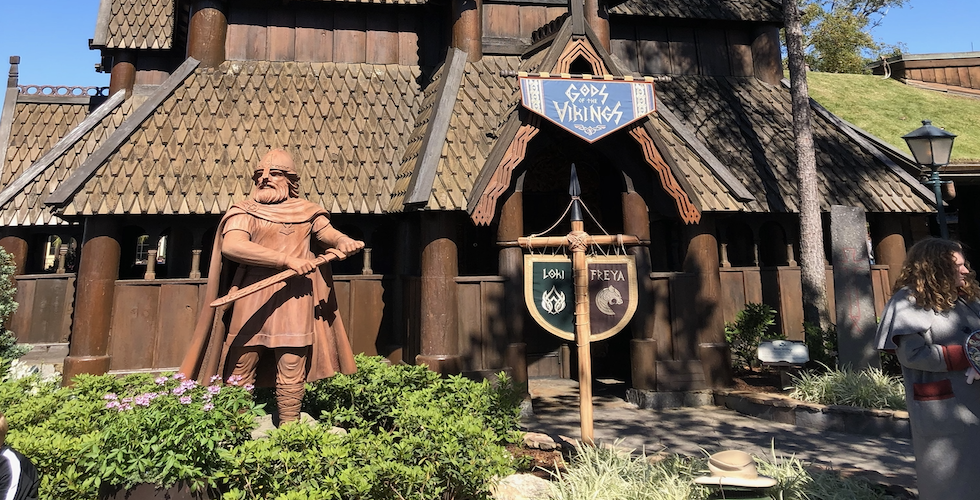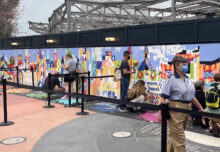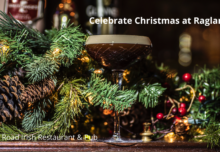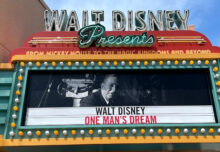 Showcasing Norway’s culture for 30 years, the Norway pavilion continues to attract crowds. Located between Mexico and China inside Epcot’s World Showcase, it is the only pavilion open to guests 2 hours before all the other lands open.
Showcasing Norway’s culture for 30 years, the Norway pavilion continues to attract crowds. Located between Mexico and China inside Epcot’s World Showcase, it is the only pavilion open to guests 2 hours before all the other lands open.
How it All Began—The History of the Norwegian Pavilion at Epcot
On June 3, 1988, in a ceremony that was broadcast live to Norway, King Harald V opened Epcot’s Norway pavilion. It was the last pavilion to join World Showcase and, to this day, it is one of the most visited. Norwegian investors raised $30 million to create the beautiful tribute to their country, while Disney paid for one-third of the costs. In 1992 the investors sold their stake to Disney. In order to promote tourism to the country, the Norwegian government decided to contribute $200,000 annually for the upkeep of the pavilion. The sponsorship ended in 2002.
Let’s Take a Tour
The 58,000-square-foot pavilion, designed to resemble a typical Norwegian village, features several distinct styles of Norwegian architecture.
The most recognizable building of the Norway pavilion is the replica of Norway’s 12th century Gol Stave Church. Inside the church, exhibits take a look at the myths and legends that guided the Vikings and how they impacted their daily life. Tales of the popular Viking gods Odin, Thor, Loki, and Freya are represented in authentic artifacts.
The Fjording shop offers Norway-themed apparel and best represents the Bergen style, while the façade of the gift store called Puffin’s Roost features the Setestal style. At Puffin’s Roost, guests love to don Viking hats and take their pictures in front of a giant troll. Puffin’s Roost is also home to one of the Kidcot Fun Stops, where cast members share insights about their country with little tykes.
The Oslo style is showcased at Akershus Royal Banquet Hall, a sit-down restaurant serving breakfast, lunch, and dinner. A replica of the 14th century Akershus Castle in Oslo, the venue is extremely popular for its princess-hosted character dining. The interior of the castle features high ceilings, stone archways, luxurious carpet, and regal banners. Disney’s Imagineers took some liberties here, as the fairy-tale inside does not reflect the original castle and fortress commenced in 1299 under King Håkon V. But guests get to meet and interact with royalty. Ariel, Belle, Snow White, Princess Aurora, and Cinderella entertain and visit with guests while they feast on Norwegian-inspired cuisine.
The breakfast offerings include a smorgasbord of smoked salmon, Gjetost cheese, and mackerel, as well as scrambled eggs and an amazing potato casserole.
At lunch and dinner, highlights are Scandinavian seafood, Kjøttkake (Norwegian meatballs served with mashed potatoes, seasonal vegetables, and lingonberry sauce), and Raspeballer (Scandinavian potato dumplings with zucchini, leeks, peas, and mushrooms served in a coconut-curry sauce).
For a snack, the Kringla Bakeri Og Kafe is one of my favorite stops. Go for the traditional Kjøttkake, and try Lefse (thin potato flatbread rolled with cinnamon butter) or Skolebrød ( a sweet cardamom bun filled with vanilla crème custard and topped with glazed and toasted coconut). Kids will, of course, be smitten by the Frozen-themed pastries.
The full-scale Viking ship, inspired by the famous Oseberg ship, was unfortunately removed in 2008.
A Ride and an Attraction Based on a Movie
 Maelstrom, the original attraction of the Norway pavilion, closed in September 2014 and reopened in 2016 as the Frozen Ever After ride. The beautiful Ålesund style of the building, however, did not change.
Maelstrom, the original attraction of the Norway pavilion, closed in September 2014 and reopened in 2016 as the Frozen Ever After ride. The beautiful Ålesund style of the building, however, did not change.
The Maelstrom ride passed through scenes of Norway’s Viking days, where guests would come face to face with a three-headed troll before plummeting down a 28-foot flume. After the ride, guests had the option of watching The Spirit of Norway, a 5-minute film showcasing Norway’s natural and cultural beauty.
With the success of Disney’s animated film Frozen, it came as no surprise when the company announced that it would convert the Maelstrom ride into a Frozen-themed attraction and that guests would be able to meet Elsa the Queen of Arendelle and her sister, Princess Anna, in their royal summer house.
Frozen is loosely based on Hans Christian Anderson’s fairy tale The Snow Queen. The movie takes place in Arendelle, a town inspired by Arendal, located southwest of Oslo. With a Broadway musical, a Frozen On Ice show, and a sequel in the works, rest assured, Frozen fever is here to stay.
The Frozen Ever After boat ride takes guests to Arendelle’s Summer Snow Day Festival, following the same path formerly used in the Maelstrom ride. Throughout the journey, riders meet Elsa; Anna; Kristoff; the reindeer Sven; Marshmallow, the snowman Elsa creates; the adorable Snowgies from the Frozen Fever short; and everyone’s favorite snowman, Olaf.
The Royal Sommerhus, a character-meet-and-greet, is decorated with tokens from Queen Elsa and Princess Anna’s childhood. When creating the Royal Sommerhus, Disney Imagineers took inspiration from a historical log cabin in Norway.
The interior conveys the look and feel of Norwegian architecture and crafts, complete with painted furniture, a stone hearth, and tapestries. In a tribute to Maelstrom, one of the tapestries depicts the three-headed troll of the extinct ride.
After touring the house, guests eventually get their meeting and photo op with Anna and Elsa. The tour ends next door in The Wandering Reindeer shop, where guests can find a huge selection of Frozen-inspired merchandise.
In an effort to entertain guests who are waiting in line for the attractions, a pair of Vikings roam the land, creating mayhem. While they are a far cry from educating visitors about Nordic culture, they are hilarious.
Update: On March 30th the Vikings set sail and are no longer wandering around the Epcot pavilion.
During the Yuletide season, the mischievous Christmas Elf Julenissen visits the pavilion, delighting children with his tales. You can find him in front of Anna and Elsa’s Royal Sommerhus.
One could argue that Maelstrom was more in line with the original concept, but the success of Frozen will continue to drive visitors to the Norway pavilion, guaranteeing a continuous interest in Norwegian culture, architecture, and food.
This article first appeared in The Norwegian American. Find out more on all there is to do around World Showcase in The Unofficial Guide to Walt Disney World with Kids. If you enjoyed this post, sign up for our newsletter here.


















